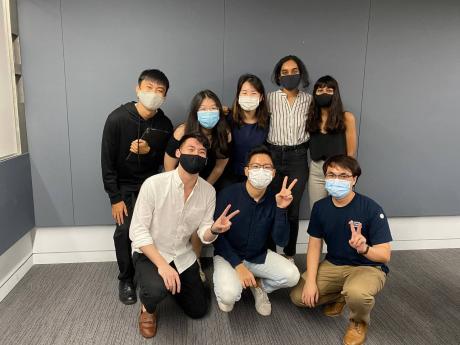No matter where we are on the planet, we live alongside eight billion people spanning multitudes of backgrounds and cultures. Recognising the differences that make every individual unique, KYLIE COOPER, NANCY ZHU AND CHARDONNAY NEEDLER set out to understand what diversity and inclusion mean, and why they are so important, especially at the workplace.
![]()
Let's begin with the terms. Diversity is about empowering people by respecting and appreciating what makes them different, whether that be in terms of age, gender identity, ethnicity, religion, sexual orientation, education, or nationality. Inclusion, on the other hand, refers to an organisational effort and practice in which groups of individuals that have different backgrounds are socially accepted, welcomed and treated as equals.
With diversity and inclusion working hand in hand, society and organisations can, as a whole, embrace the different characteristics that individuals can bring to the community. Though efforts to increase diversity and inclusion are present, they can be slow at producing results. So how do we speed things up? Here are five ways.
#1. Be Intentional
“There’s no way to innovate if we’re all the same,” says Christy Davis, Executive Director of the Lien Centre for Social Innovation.
Indeed, it's easy to get caught up with work itself and overlook the people you’re working with. Studies have found, however, that diverse groups can lead to more creative results. A diverse team also offers a broader range of experiences, and can generate solutions or plans that take various perspectives into account.
![]()
When building your team, make it a goal to include people who have different skillsets and who hail from different backgrounds—whether that be gender, race, religion, sexuality, or a myriad of other identifications. It may seem easier to choose people you’re most familiar with, but expanding your circle can lead to great ideas.
#2. Work with People You’re Serving
When promoting social innovation in particular, it’s important to keep in mind who you’re doing all of the work for. In the end, the solutions you and your team are creating will be for others, so it’s crucial to recognise the exact needs and wants of those whom you're serving. This idea of addressing the core needs of the people being served is known as Human-Centred Design.
![]()
“At the end of the day, they own the solution,” says Davis, who suggests that a project doesn’t end once one has finished working on it. "The solutions your team has created should be sustainable so that the people you’re helping can continue to benefit long after you’ve left."
#3. Be Aware of Structural Factors
"You cannot address a problem until you've acknowledges that it exists," says Regina Baker, a Sociology professor and poverty scholar at the University of Pennsylvania. And even then, recognising problems alone isn't enough to make change happen—one must also understand why the problem exists in order to arrive at a tangible solution.
"Behavioural issues will require different solutions to systemic problems," Baker says. “After noticing something, think, What’s driving it? Then look at your own methods, and what you and others are trying to do about it.”
![]()
In the face of inequalities, whatever their context, remember that getting to the bottom of issues of representation will take more than a quick fix. The sociological concept of “cumulative advantage” further supports this, as it reminds us that privilege and exclusion compound over years. So, be aware that everyone you meet and interact with comes from different circumstances.
#4. Diversify Your Diversity
Diversity at the highest levels of the corporate hierarchy ensures the spread of different understandings instead of repetition and groupthink. So it isn't enough to have a team that espouses anti-discrimination ideals. It is critical that diversity spreads throughout the organisational structure.
![]()
Baker says it's common to hear of businesses pledging their solidarity with anti-racism and the Black Lives Matter movement. But they also need to ask themselves: "Are the minorities in their organisations being paid less for the same work, and are all the minorities in lower-level positions?” If so, things need to change.
#5. Practise Empathy
Similar to point #3, recognition of the issue itself isn't enough to effect positive change. When dealing with problems at the team level, it is vital to practise empathy.
“For some, being a minority in certain spaces makes them like they’re not wanted or their ideas aren’t valued,” says Baker, "but to truly diversify and adjust to new teams, take time to deeply consider where this person is from, what they have experienced, and what they uniquely know."
![]()
Lastly, remind yourself—and others on your team—that everyone is equal and all ideas are valued.
Images via rawpixel.








Comments